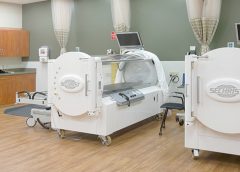By Bill Richlen, PT, WCC, DWC, and Denise Richlen, PT, WCC, DCCT
How many times have you heard someone say, “I didn’t know PTs did wound care”? Statements like this aren’t uncommon. The role of physical therapists (PTs), occupational therapists, and speech therapists in wound care is commonly misunderstood by and even a mystery to many clinicians. Sometimes the therapists themselves are confused about reimbursement or what their role on the wound care team can be. (more…)
Read More
 Starting your own consulting business is an exciting and rewarding experience: You’re the boss; you’re in charge. The question is, do you have what it takes? Along with the excitement of being the boss comes the responsibility of decisions and commitment. Your decisions will affect whether the business is a failure or a success.
Starting your own consulting business is an exciting and rewarding experience: You’re the boss; you’re in charge. The question is, do you have what it takes? Along with the excitement of being the boss comes the responsibility of decisions and commitment. Your decisions will affect whether the business is a failure or a success.